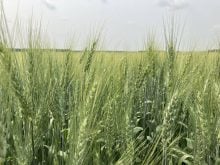In September, reports that the La Nina weather system was making a comeback raised concerns that South American crop regions would have a dry growing season.
However, the weather this seeding season appears ideal and forecasters are increasing their guesses for the 2011-12 Brazilian crop, the world’s second large soybean producer after the United States.
Brazilian forecaster Celeres now pegs the soybean crop at 75.5 million tonnes, up about 300,000 tonnes from its forecast last month and about equal to last year’s record large crop.
Read Also

Gap in emission regulations hamstrings Canadian hybrid truck manufacturer
A B.C. company building hybrid engines for heavy trucks says they have the opportunity to build something leading edge in Canada, but our own laws are stopping them from doing it.
Celeres expects seeded acreage will be slightly higher than last year but yields slightly lower.
Argentina is the world’s third largest soybean producer. Seeding there is behind normal after a dry September, but moisture arrived in October and is continuing to spread across dry regions.
The La Nina last year knocked Argentine soybean production down to 49 million tonnes from 54.5 million the year before. This year, the U.S. Department of Agriculture forecasts a revival to 53 million tonnes.
The critical time will be December when the La Nina, although weaker, is expected to be fully formed.
The improved prospect for South American crops is weighing on soybean futures.
Also, the harvest in the Black Sea region has been better than expected. Russia, Ukraine and Kazakhstan are hotly competing in the world market, driving wheat prices lower, particularly for lower quality grain.
Quantities of lower quality wheat look set to increase even more.
While La Nina is not hurting South America, it appears to be sparking above average rain that is damaging wheat in Australia. Last year, torrential November and December rain wreaked havoc on the quality of a record size wheat crop. Australia still has large quantities of low quality old crop wheat and it is slugging it out with Black Sea source in a race to the price bottom to move it.
If rains continue this year, Australia will have even more damaged wheat to add to its pile.














